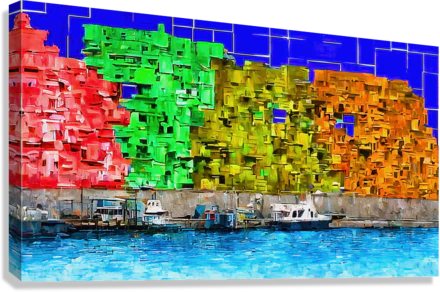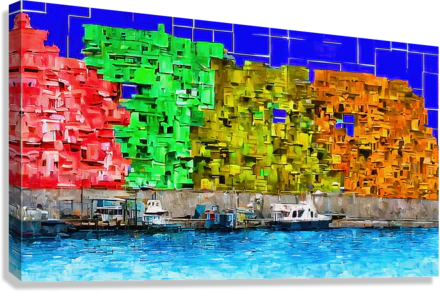Habitat 67's groundbreaking approach to urban housing was inspired by the desire to combine the benefits of suburban homes—privacy, fresh air, and green space—with the density and economy of city apartments. Safdie's design achieves this balance by stacking prefabricated concrete modules in various configurations, allowing each of the 146 residences to enjoy spacious terraces. This modular system was not only innovative in terms of spatial arrangement but also in its construction technique, involving the use of cranes to place the massive concrete forms, a method that was both efficient and symbolically tied to the building's forward-looking ethos.
The complex's aesthetic, often associated with the Brutalist movement, emphasizes raw concrete surfaces and geometric forms. However, Habitat 67 transcends typical Brutalist characteristics by integrating elements of light, space, and community. Its design encourages interaction among residents while providing intimate spaces that offer solitude and retreat from the urban hustle. The interlocking units create a unique visual rhythm, with the play of shadow and light changing throughout the day and seasons, adding a dynamic quality to the static concrete.
Internationally recognized, Habitat 67 has attracted visitors and architecture enthusiasts from around the globe, eager to witness Safdie's utopian vision for urban living. Despite its mixed reception initially—where some praised its innovative design while others criticized its unconventional aesthetics—Habitat 67 has endured as a beloved landmark in Montreal's skyline. It challenges traditional notions of community and housing, remaining a vibrant testament to the possibilities of architectural imagination.
Adding another layer to this architectural masterpiece, Lebanese-Canadian Montreal-based artist Fouad El-Khabbaz's reinterpretation, "Habitat 67," breathes new life into the structure. By infusing it with vibrant colors, El-Khabbaz not only challenges the monochrome palette often associated with Brutalism but also highlights the complex's playful and optimistic spirit. This artistic intervention invites a broader audience to engage with Habitat 67, encouraging a deeper appreciation for its architectural significance and its role as a living experiment in the evolution of urban housing. Through El-Khabbaz's eyes, we are reminded of the power of art to transform and recontextualize our built environment, making Habitat 67 not just a monument of the past, but a beacon of continuous inspiration and innovation.

In the heart of Montreal, Fouad El-Khabbaz, also known as Le Boulanger, emerges as a visionary artist whose work transcends traditional mediums, offering a fresh perspective on the city's architectural heritage. His chromatic homage to Habitat 67 underscores his commitment to exploring the intersections of art, architecture, and urbanism, enriching Montreal's cultural landscape with his Lebanese-Canadian heritage and innovative artistic approach. Through his vibrant reinterpretation, El-Khabbaz invites us to reimagine the familiar, revealing the hidden beauty and potential in structures we may have taken for granted, and affirming the enduring impact of creativity in shaping our understanding of space and community.

